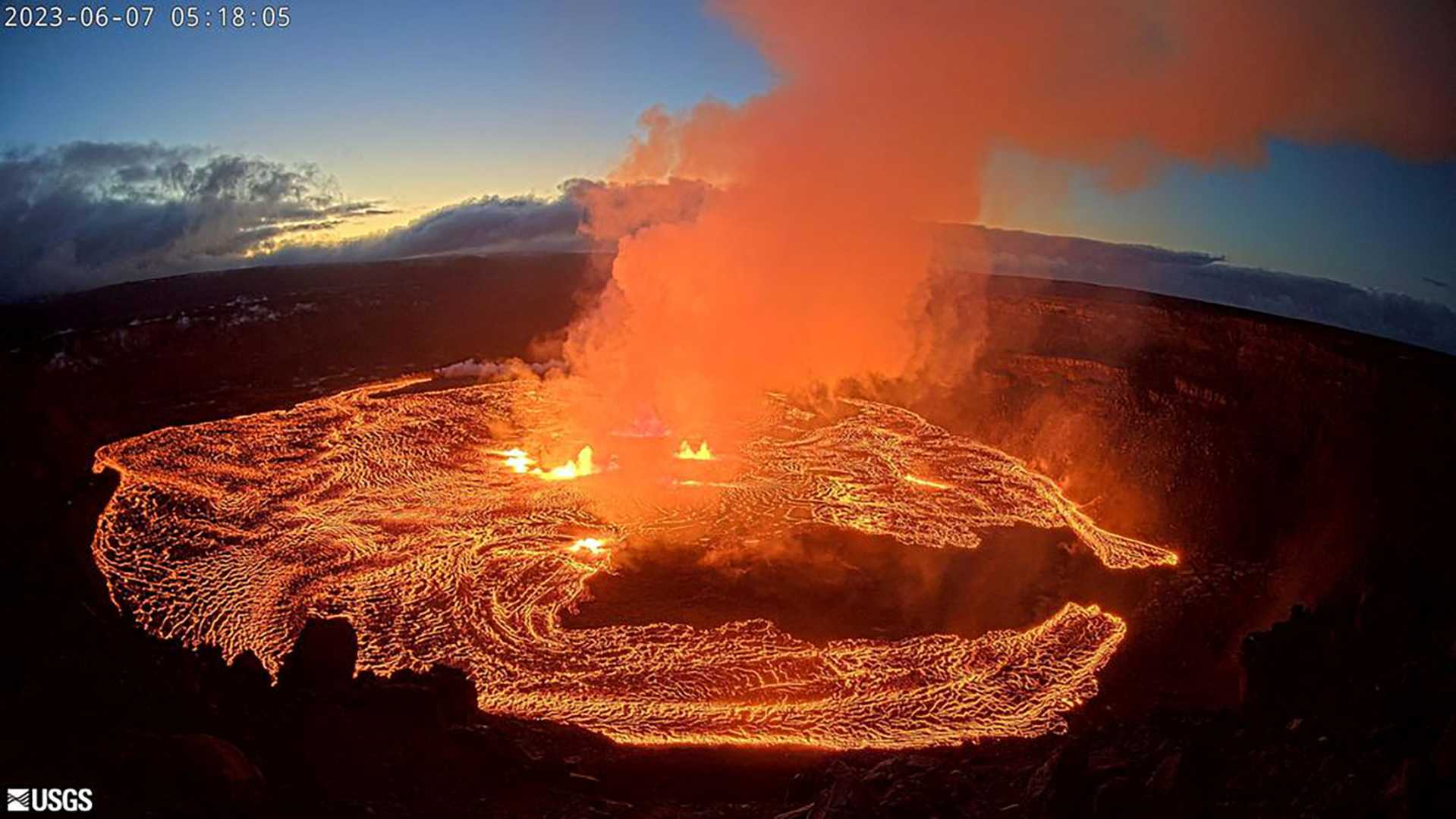News
Kilauea Volcano Erupts Again, Lava Shoots 100 Feet in Hawaii

HONOLULU, Hawaii — Kilauea Volcano erupted again on Friday, shooting lava 100 feet (30 meters) into the air within Hawaii Volcanoes National Park. This marks the 31st eruption since December 2024, reflecting Kilauea’s status as one of the world’s most active volcanoes.
The eruption began in the morning when the north vent at the summit crater started continuously spattering. A few hours later, the lava overflowed, and fountains erupted in the afternoon. Fortunately, the eruption was contained within the summit crater, with no homes at risk.
Janice Wei, a volunteer with the National Park Service, described her excitement at witnessing the event. “Every eruption feels like I am sitting in the front row at nature’s most extraordinary show,” she said in an email. “It sounds like a roaring jet engine or crashing ocean waves, and I can feel its heat from over a mile away.”
Kilauea is located on Hawaii Island, about 200 miles south of Honolulu. Ken Hon, the scientist-in-charge at the Hawaiian Volcano Observatory, explained that magma is flowing into the lower chamber below Halemaumau Crater at a rate of about 5 cubic yards (3.8 cubic meters) per second. This influx expands the magma chamber, pushing magma upward through cracks to the surface.
Scientists say the ongoing eruption is part of a larger pattern. Similar repeated eruptions occurred in 1959, 1969, and 1983. Each prior event had many lava fountain episodes, the last one lasting over three decades before ending in 2018.
Current conditions suggest that the eruption could change or cease if the magma supply dwindles. Sensors positioned around the volcano help scientists predict when new lava may emerge. “Our job is like being a bunch of ants crawling on an elephant trying to figure out how the elephant works,” Hon remarked.
However, recent lava fountains have been shorter, according to University of Hawaii geology professor Steve Lundblad. He noted, “We’re still gonna have spectacular eruptions; they’re just going to be wider and not as high.”
Hawaii Volcanoes National Park spokesperson Jessica Ferracane encouraged visitors to sign up for eruption alerts. She also warned that recent episodes have only lasted about 10 to 12 hours, so those interested should act quickly. Visitors are advised to stay on marked trails due to the instability of cliff edges and the hazards posed by volcanic gases.
Despite the dangers, park visitation has surged this year. In April 2025, there were 49% more visitors compared to April 2024. Ferracane reminded visitors to be cautious, citing a rescue operation earlier this year when a tourist fell while attempting to get a closer view of an eruption.
Huihui Kanahele-Mossman, executive director of the Edith Kanakaʻole Foundation, views lava flows as natural resources vital to Hawaii’s landscape. She connects the eruptions to Hawaiian culture and tradition, stating, “To be able to actually see that eruption that’s described in the stories, that’s always exciting to us.”
As Kilauea continues to erupt, the spectacle draws people from around the world, eager to witness nature’s power in action.












